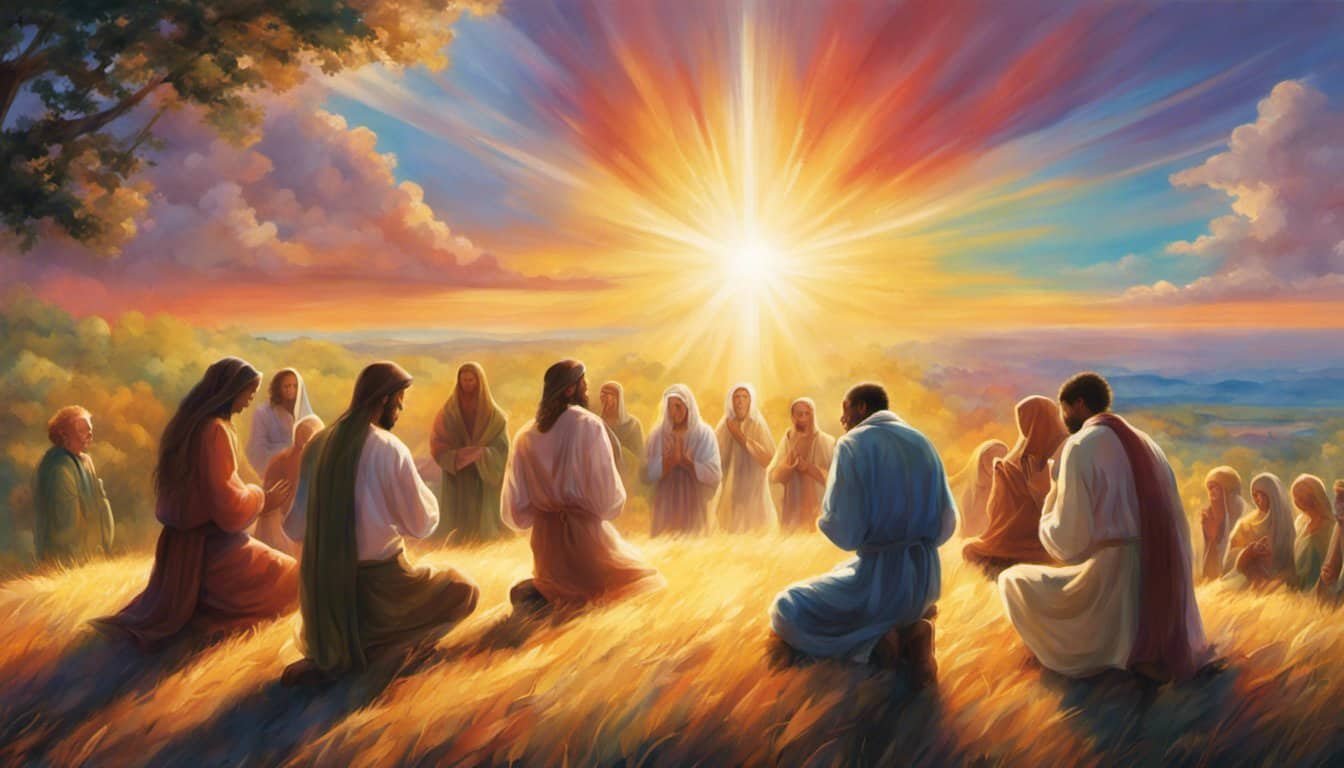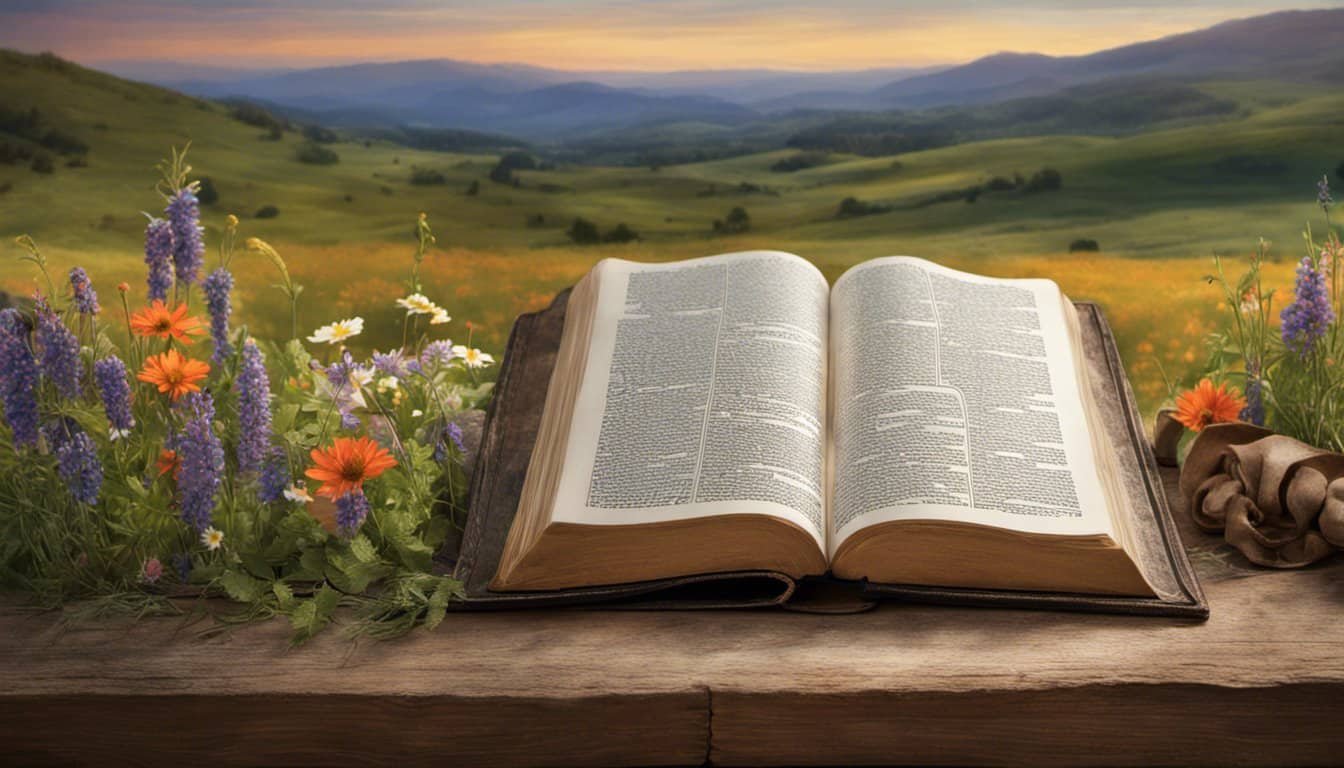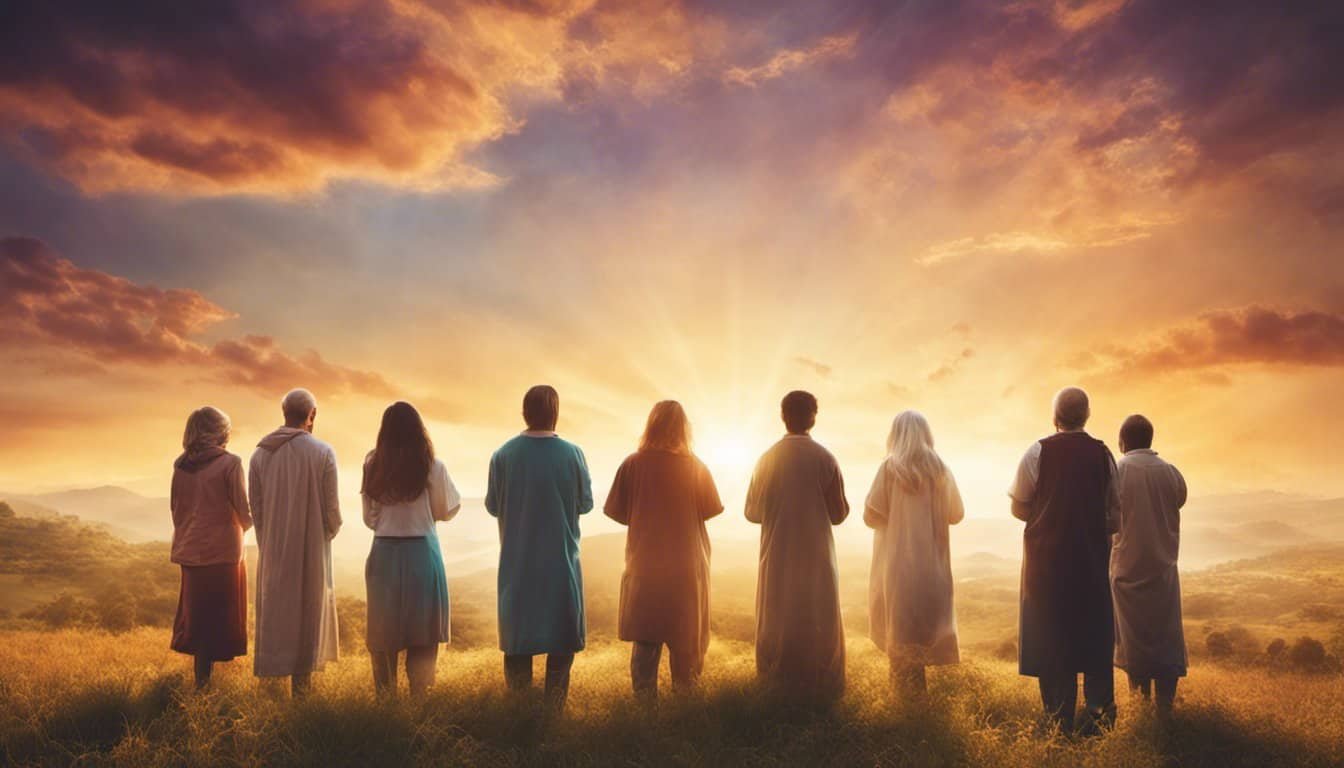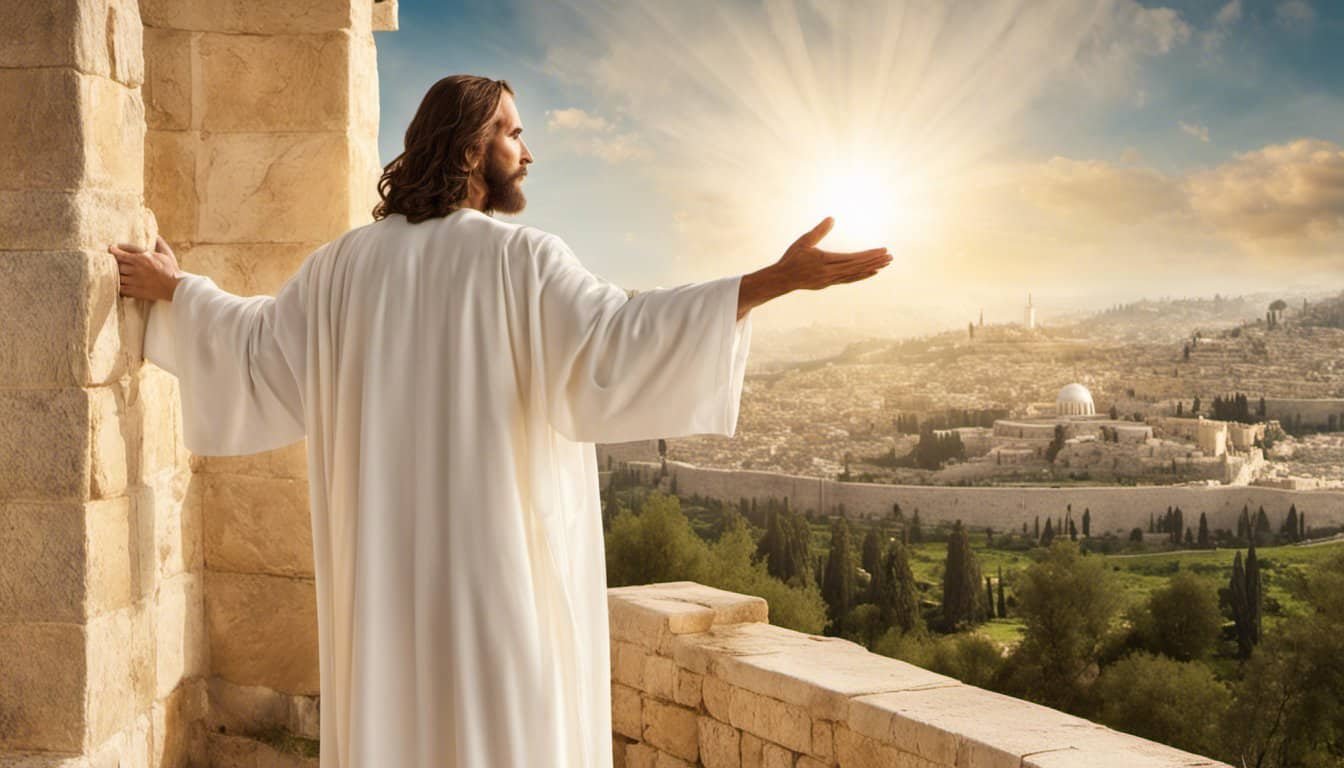Diving into the Old Testament can feel like opening a treasure chest filled with ancient wisdom, captivating stories, and profound lessons. But with 39 books, it can be overwhelming to decide where to start. Should you begin with Genesis or maybe jump straight to Psalms?
I remember feeling a bit lost when I first opened the Old Testament. After some trial and error, I discovered a reading order that made the journey not only manageable but deeply enriching. Let me share some tips that can help you navigate this sacred text in a way that brings its stories and teachings to life.
Understanding the Old Testament Structure

Examining the Old Testament can feel daunting, but breaking it down can make it manageable. I’ll guide you through its structure, making it easier to grasp its beauty and significance.
The Torah or Pentateuch
The Torah, also known as the Pentateuch, consists of the first five books: Genesis, Exodus, Leviticus, Numbers, and Deuteronomy. These foundational texts not only lay out the creation of the world and humanity but also detail God’s covenant with the Israelite people and His laws given through Moses.
- Genesis recounts the creation, the fall, the flood, and the patriarchs: Abraham, Isaac, Jacob, and Joseph.
- Exodus tells the story of Moses, the ten plagues, the escape from Egypt, and the receiving of the Ten Commandments.
- Leviticus focuses on laws regarding worship, sacrifices, and holy living.
- Numbers walks through the Israelites’ 40-year journey in the desert, emphasizing rebellion and faith.
- Deuteronomy recaps the law for the Israelites as they prepare to enter the Promised Land.
Historical Books

The historical books narrate Israel’s history from entering Canaan to the Babylonian exile. They include Joshua, Judges, Ruth, 1 & 2 Samuel, 1 & 2 Kings, 1 & 2 Chronicles, Ezra, Nehemiah, and Esther.
- Joshua details the conquest of Canaan.
- Judges depicts the time of repeated cycles of sin, judgment, and deliverance.
- Ruth tells a story of loyalty and God’s providence during the time of the judges.
- 1 & 2 Samuel explore the life of Samuel, Saul, and David’s rise to kingship.
- 1 & 2 Kings record the history of Israel’s and Judah’s kings leading to captivity.
- 1 & 2 Chronicles give a priestly perspective on the same period.
- Ezra and Nehemiah focus on the return from exile and the rebuilding of the temple and walls of Jerusalem.
- Esther narrates the story of a Jewish queen who saves her people.
Wisdom Books and Poetry
Wisdom and poetry books offer profound insights and artistic expressions of humanity’s relationship with God, including Job, Psalms, Proverbs, Ecclesiastes, and Song of Solomon.
- Job explores themes of suffering and God’s sovereignty.
- Psalms is a collection of songs and prayers expressing a wide range of emotions.
- Proverbs contains wise sayings and moral lessons.
- Ecclesiastes examines life’s meaning and purpose.
- Song of Solomon celebrates romantic love and is often seen as an allegory of God’s love for His people.
Major and Minor Prophets
Prophetic books are divided into major and minor prophets, not by importance but by length. Major prophets include Isaiah, Jeremiah, Lamentations, Ezekiel, and Daniel, while the minor prophets are shorter books from Hosea to Malachi.
- Isaiah speaks of judgment and redemption, with prophecies about the Messiah.
- Jeremiah warns of Jerusalem’s destruction but also offers hope for restoration.
- Lamentations is a series of laments for the fallen city of Jerusalem.
- Ezekiel contains vivid visions and symbolic acts to convey God’s message.
- Daniel features stories of faith and visions of future events.
- Minor prophets, like Hosea, Joel, Amos, and others, address Israel’s moral and spiritual issues, conveying messages of judgment and hope.
Each book adds a new layer to understanding God’s relationship with His people, providing context and depth to His divine narrative. By following this structured approach, the Old Testament’s teachings and stories will come to life, enriching your spiritual journey.
The Traditional Order of Reading
Understanding the traditional order of reading the Old Testament can help you navigate its rich contents. Let’s dive into this tried-and-true approach.
Canonical Sequence
The canonical sequence is the arrangement found in most Bibles. It starts with the Torah or Pentateuch: Genesis, Exodus, Leviticus, Numbers, and Deuteronomy. These books lay the foundation by detailing the creation, early history, and laws that shape the Israelites’ identity. Genesis covers everything from Adam and Eve to Joseph’s time in Egypt, laying the groundwork for what’s to come.
Next, the Historical Books chronicle the Israelites’ journey in the Promised Land. From Joshua through Esther, these books cover conquests, kings, exile, and returns. Think of Judges and 1 & 2 Kings—they’ve got action, drama, and lessons on faith and disobedience.
Following history, the Wisdom Books and Poetry offer deep reflections and prayers. Psalms, Proverbs, and Ecclesiastes are included here. Psalms contains songs of praise and lamentation, while Proverbs offers practical wisdom for everyday life.
Finally, the Major and Minor Prophets wrap up the Old Testament. Major Prophets like Isaiah and Jeremiah deliver detailed prophecies, while Minor Prophets such as Hosea and Amos provide shorter, impactful messages. Each prophet’s writings reflect their unique context and the important calls to faithfulness they delivered.
Book Overview
Each Old Testament book offers unique insights and lessons. Here’s a brief overview:
- Genesis: Creation, early humanity, and the patriarchs—Abraham, Isaac, Jacob, and Joseph.
- Exodus: Moses, liberation from Egypt, and the giving of the Ten Commandments.
- Leviticus: Laws concerning worship, sacrifices, and holiness.
- Numbers: Israel’s journey in the wilderness, including rebellions and census data.
- Deuteronomy: Moses’ final speeches and a restatement of the law before entering the Promised Land.
- Joshua: Conquest of Canaan led by Joshua.
- Judges: Israel’s cycle of sin and redemption under various judges.
- Ruth: A story of loyalty and redemption through Ruth and Boaz.
- 1 & 2 Samuel: Rise of the monarchy—Saul, David’s anointing, and his reign.
- 1 & 2 Kings: The kingdom’s division, prophetic ministries, and eventual exile.
- 1 & 2 Chronicles: A priestly perspective on Israel’s history, from Adam to the Babylonian exile.
- Ezra and Nehemiah: Return from exile and rebuilding Jerusalem’s temple and walls.
- Esther: God’s providence through Esther’s bravery.
Recommended Reading Orders for Better Understanding

Navigating the Old Testament can feel overwhelming, but choosing a reading order can help make sense of its depth and wisdom. Here are three recommended approaches.
Chronological Order
Reading the Old Testament in the order events occurred can help you follow the historical flow. Start with Genesis, then move to Job, Exodus, Leviticus, Numbers, and Deuteronomy. Next, read Joshua, Judges, Ruth, 1 Samuel, 2 Samuel, 1 Kings, 2 Kings, and 1 Chronicles, followed by the prophetic books in the sequence they were written.
Genesis: Begins God’s creation and early human history.
Job: A faithfully written account that many believe predates Genesis chronologically.
Exodus – Deuteronomy: Detail the Israelites’ escape from Egypt and journey to the Promised Land.
Thematic Order
Tackling the Old Testament by themes lets you focus on specific concepts and motifs. Begin with the Pentateuch (first five books), then move to the Historical Books, Wisdom Literature, and Prophetic Books. Dive deeper within each section.
Pentateuch (Torah): Genesis through Deuteronomy form the law’s foundation and include the creation, the fall, the flood, and the patriarchs.
Historical Books: Joshua through Esther provide narratives on the history of Israel, including the conquest of Canaan and the monarchy’s rise and fall.
Wisdom Literature: Job, Psalms, Proverbs, Ecclesiastes, and Song of Solomon delve into reflection, lament, praise, and practical wisdom for living.
Historical Context Order
Reading with a focus on historical context means appreciating each book’s cultural, societal, and historical backdrops. Begin with books that set the Old Testament’s context. Then move to those providing insight into different eras of ancient Israel’s history.

Genesis through Deuteronomy: Concentrate on these to understand the beginnings, laws, and covenant.
Joshua through Kings: Trace the conquest of Canaan, Israel’s establishment, and eventual division.
Ezra and Nehemiah: Highlight the post-exile period, rebuilding of Jerusalem, and restoration of the people.
By choosing an order that aligns with your interests or goals, you can uncover the Old Testament’s richness more effectively.
Benefits of Reading the Old Testament in Different Orders
Exploring the Old Testament can be a deeply enriching journey, depending on how one approaches it. Reading it in different orders offers unique perspectives and helps uncover hidden gems.
Enhancing Comprehension

Starting with how we often find ourselves lost in the text, especially if we read it cover-to-cover, chronological reading provides clarity. Reading in the order events happened, starting with Genesis and moving through to the later prophetic books, helps make sense of the timeline and how events relate to each other. Suddenly, those seemingly random stories fit together like pieces of a puzzle.
Thematic order can also work wonders. Say someone wants to focus on the theme of covenant. They could start with Genesis to understand God’s covenant with Abraham, then jump to Exodus for the covenant with Moses, and finally, explore the prophets to see how these covenants evolve. This method offers a deeper grasp of recurring concepts and lets readers see how themes develop over time.
Historical context order involves understanding the culture and circumstances when each book was written. By reading books like Ezra and Nehemiah, then flipping back to the prophets who wrote in that period, one can grasp the social and political climate. It makes the lessons more relatable and the stories more tangible.
Deepening Spiritual Experience
On the spiritual front, experimenting with the order can make a big difference. Reading Psalms after understanding David’s life in Samuel and Kings connects the dots, making his prayers more heartfelt. The struggles he faced become real, and his words offer genuine comfort and inspiration.
Prophetic books like Isaiah and Jeremiah hold different weight when read after knowing Israel’s history. Suddenly, they’re not just obscure judgments; they’re timely messages to a struggling nation. This awareness deepens the spiritual experience, offering new layers of reflection.

Lastly, diving into the Wisdom Books, like Proverbs or Ecclesiastes, after reading historical contexts, adds depth. Understanding Solomon’s reign in Kings can make his proverbs and reflections in Ecclesiastes more profound, shedding light on the wisdom he shared based on his experiences.
Feel free to tweak these reading methods to match your spiritual needs or curiosity. The Old Testament is rich, and there’s always something more to discover.
Conclusion
Reading the Old Testament can be a transformative journey, and choosing the right order can make all the difference. Whether you opt for chronological, thematic, or historical context order, each method offers a unique way to connect with the text.
By aligning your reading approach with your spiritual needs or curiosity, you can uncover new insights and deepen your understanding. Don’t hesitate to experiment with different orders to see which resonates most with you.
The richness and wisdom of the Old Testament are waiting to be discovered, and the right reading order can help you appreciate its timeless messages even more. Happy reading!
Frequently Asked Questions
What is the Old Testament?

The Old Testament is a collection of ancient religious texts that form the first part of the Christian Bible. It consists of various books that include the Torah/Pentateuch, Historical Books, Wisdom Books and Poetry, and Major and Minor Prophets.
What are the main sections of the Old Testament?
The Old Testament is divided into four main sections: the Torah/Pentateuch, Historical Books, Wisdom Books and Poetry, and Major and Minor Prophets. Each section has a specific focus and contributes uniquely to the understanding of God’s relationship with His people.
Why is the Old Testament important?
The Old Testament is important because it lays the foundation for the teachings and events of the New Testament. It portrays God’s relationship with His people, provides historical context, and offers wisdom and prophecies that are essential to Christian faith.
What are the recommended reading orders for the Old Testament?
The article suggests three reading orders: chronological, thematic, and historical context. Chronological follows the timeline of events, thematic focuses on specific themes like covenant, and historical context considers the cultural and societal background of each book.
What is chronological order reading?
Chronological order reading involves following the sequence of events from Genesis to the prophetic books. This method helps to clarify the timeline and connections between different parts of the Old Testament.
What is thematic order reading?

Thematic order reading involves focusing on specific themes that recur throughout the Old Testament, such as covenant. This method allows readers to gain a deeper understanding of these themes and their significance.
What is historical context order reading?
Historical context order reading means reading the books of the Old Testament while considering the cultural and historical background in which they were written. This approach makes the lessons and stories more relatable and enriched with context.
How can different reading orders enhance understanding?
Different reading orders can provide unique perspectives and uncover hidden gems within the text. By experimenting with various methods, readers can deepen their spiritual experience and gain a more comprehensive understanding of the Old Testament.
Can I switch between different reading orders?
Yes, you can switch between different reading orders based on your spiritual needs or curiosity. This flexibility allows you to continue discovering new insights and enhances your overall engagement with the Old Testament.












